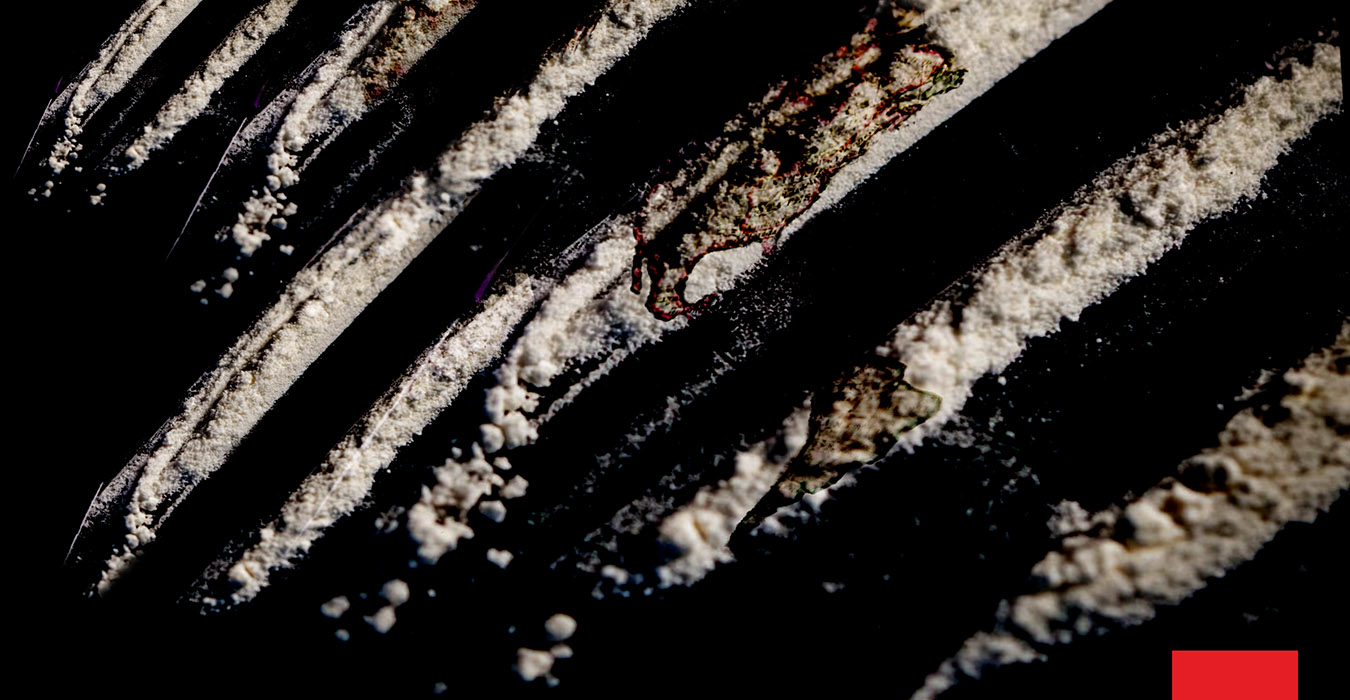
Text: Josefina Salomón / Ilustration: Sergio Ortiz Borbolla
1. Cocaine is a highly addictive stimulant substance that acts directly on the central nervous system. It increases brain activity by raising energy levels and alertness through short-lived feelings of euphoria. Its main chemical substance comes from the leaves of the plant coca Erythroxylum, which, in its different varieties, contains varying levels of the alkaloid.
2. Coca. Although the cocaine alkaloid content of the coca leaf is between 0.5 and 1.0 percent, in 1961, the United Nations declared the plant illegal. Nevertheless, millions of people in Latin America consume the plant and use it as a mild stimulant, hunger suppressant and to combat fatigue and altitude sickness. People chew it by holding a ball of coca leaves soaked in saliva in their mouths along with a substance that helps extract the alkaloid, drink it as a tea or even as a food supplement.
3. Effects. Cocaine constricts blood vessels, increases body temperature, blood pressure and heart rate, and can cause serious adverse effects, particularly when combined with other substances. It is so addictive that in experiments, laboratory mice endure electric shocks and even give up food and water to get the drug. Over time, cocaine kills dopamine receptors, our “pleasure centres”, meaning that more doses are needed to generate the same effect.
1. The Andes. The altitude and climate of the slopes of this monumental mountain range, in the area of Bolivia, Colombia and Peru, provide the perfect environment for the coca plant, which can be harvested several times a year. Coca bush cultivation has been on the rise in recent years, with a 35 per cent increase between 2020 and 2021, particularly in Colombia, according to UN data.
2. Expansion. Cultivation of the famous plant has also expanded to other countries in an attempt by criminal organizations to expand their business. From the border areas of Venezuela and Ecuador to Mexico and Guatemala, there have been increases in cultivation, although the vast majority remains concentrated in Colombia, Peru and Bolivia.
3. Transport. The catalogue of methods organizations use to get the “white gold” from point A to B is increasingly broad and creative – including transport in homemade submarines, shipments of fruit and vegetables, hidden in machinery and even in the bodies of travellers.
4. Ingenuity. It doesn’t stop there. To avoid being caught, traffickers are increasingly adopting a new method: camouflaging the cocaine paste in liquid form in products such as paper, clothes or plastics. This is then recovered in clandestine laboratories employing Latin American experts.
1. From leaf to powder. Cocaine production is complex, hard on workers and highly toxic to the environment. It can take up to 600 kilos of coca leaves to make one kilo of coca paste, which can then be transformed into cocaine hydrochloride for consumption. To separate the long dark green leaves from the plant, people first rub them with their hands. The leaves are then crushed, mixed with lime and soaked in petrol, which helps extract the drug. The liquid is mixed in large metal vats for hours. Chemicals such as sulphuric acid and water are then used to extract the dissolved cocaine. A group of investigative journalists in Colombia described this part of the process as similar to “cheese making“.
2. Cocaine hydrochloride. The thick mucus-like substance is then mixed with acetone, ammonia, caustic soda and sulphuric acid to facilitate the drug extraction process. Once the water is filtered, it is cooked with other liquids and the impurities are removed by hand. With each chemical added, the drug becomes purer. Finally, the mixture is left to stand until it turns into dry rocks: cocaine paste or “pasta base”. The rocks are then taken to other home laboratories to be “repurified and filtered” into cocaine hydrochloride, the powder that is sold to millions of people.
3. Fillers. The production and retailing of cocaine has a single goal: to maximise profits, whatever the cost. It should come as no surprise, therefore, that the final product contains fillers that often increase the dangerousness of the drug. Among the more obscure substances is fentanyl – a potent synthetic opiate 50 to 100 times more potent than heroin – or the even more potent carfentanil, which has caused a large number of overdose deaths and is causing a serious crisis in the United States.
1. Complex network. This is formed by organisations that control the production and distribution of cocaine, usually as part of criminal portfolios that include other illicit activities such as trafficking in precious metals, arms and even people. The business is now controlled by powerful Colombian and Mexican organizations that control, through smaller criminal groups, the production and transport of cocaine to their most profitable markets, particularly in Europe. Adapting to opportunities is what makes these organisations increasingly effective.
2. The Invisibles. Criminal organizations could not operate alone. Oiling the wheels of their operations are hundreds of thousands of people who are in charge of harvesting coca bush, processing and transporting drugs, taking care of shipments, organizing logistics, paying and collecting extortion and others. These people tend to come from marginalized social sectors and are often the first to be punished by the justice system.
3. Users. Cocaine use – the fourth most popular drug behind marijuana, opioids, and amphetamines – is increasing worldwide, according to UN data. The largest numbers of users are in the Americas and Europe, although, proportionally, the highest concentration of people who consume cocaine is in Australia.